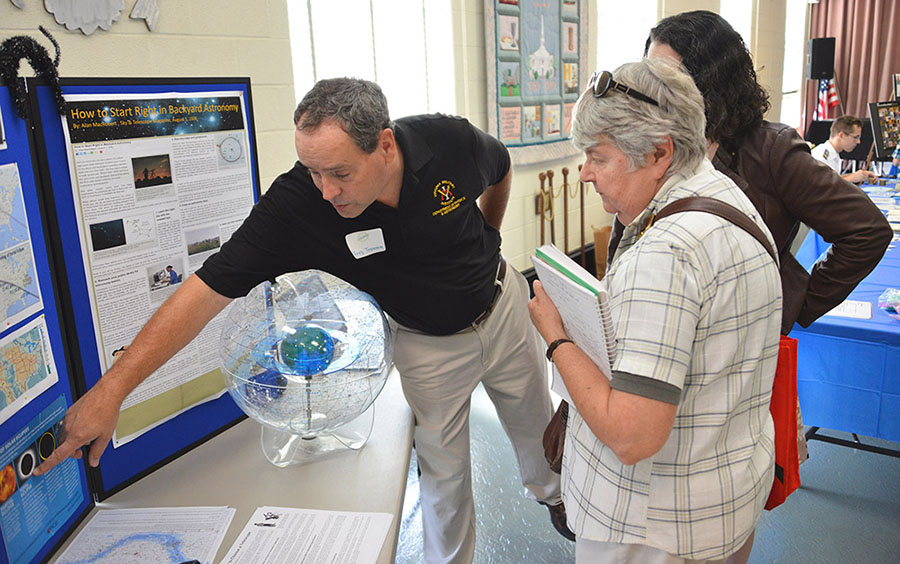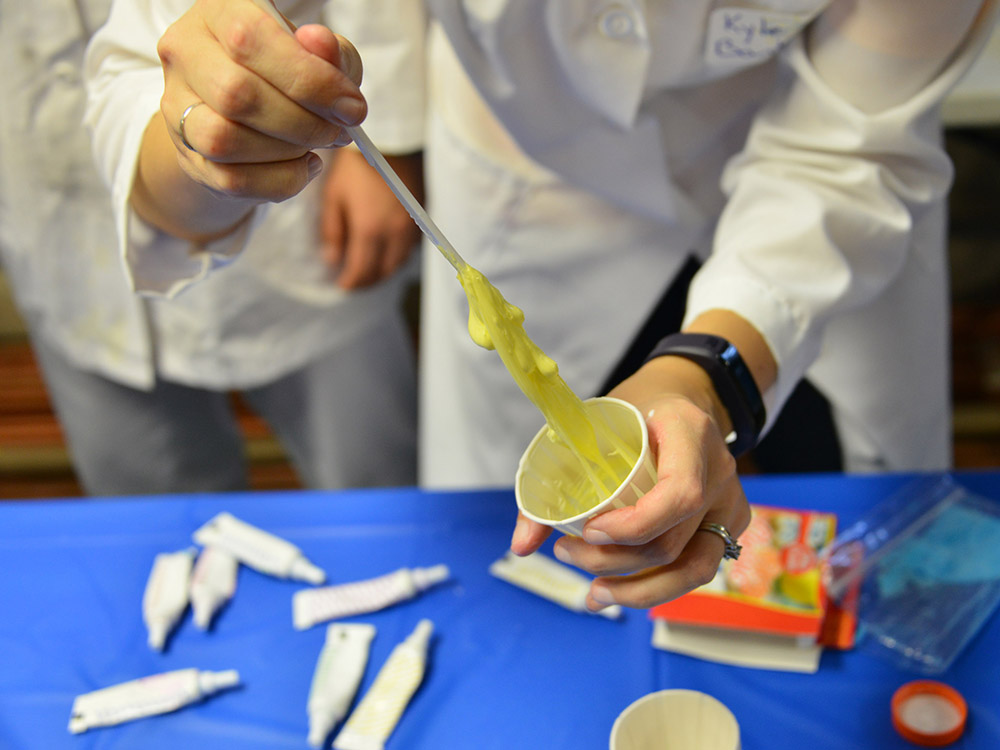‘Everybody Can Be a Scientist’
 |
| Col. Greg Topasna talks astronomy with science fair participants. – VMI Photo by Stephen Hanes. |
LEXINGTON, Va., Oct. 19, 2016 – Children of all ages crowded into three locations in downtown Lexington Oct. 16, giggling with anticipation, pushing and shoving, all eager to spend the day with … science?
Yes. An estimated 400 young people gathered in Lexington for the third annual Science Fest and Maker Faire, and from most accounts, they had fun with the hands-on learning approach. They weren’t the only ones enjoying the event, as three VMI professors – Maj. Kyle Bantz, Col. Gregory Topasna, and Col. Daniela Topasna – joined in on the festivities and had just as much fun as the students.
“I get an immense satisfaction out of doing this,” said Gregory Topasna, who has staffed the fair each year. “It’s a lot of hard work, but I get a lot out of it.”
So do the children. The VMI contingent, along with scientists from numerous schools and organizations throughout the area, brought with them a wealth of hands-on experiments.
Bantz, for example, taught the children about polymer chemistry while allowing them to create a bag of a Silly Putty-like compound to take home.
Gregory Topasna, who serves as a professor of physics and astronomy at VMI, brought with him Play-Doh, a planetsphere, and numerous other models to help the children understand the wonders of space.
Daniela Topasna, also a professor of physics and astronomy, allowed the children to play with mirrors, microscopes, and 3-D glasses as part of her demonstration in nanotechnology and photonics.
The hope is that the children will not only have fun, but that they will also develop an excitement and interest in scientific endeavors.
“Psychologically speaking, if it’s an enjoyable thing you did, you are more likely to do it again,” said Gregory Topasna. “If something is interesting to you, you’ll pursue it. If science is boring, then you are likely not to do it.”
“I remember doing these types of experiments when I was little, and these are the things that got me interested in being a scientist,” added Bantz. “It’s always fun to come back and … get them excited about it at this age.
“I feel like there’s a fear of science or not knowing the answer,” she added. “It’s fine not to know the answer, and I explain to the kids that we don’t always know the answer. It’s important to show them at this age that it’s good to ask those questions and it’s important not to have the answers and to keep looking for the answers.”
 |
|
A hands-on activity to make a Silly Putty-like compound led by Maj. Kyle Bantz gives participating children an introduction to polymer chemistry. – VMI Photo by Stephen Hanes. |
All three VMI professors noted that another important reason to engage science students while they are young is the need for more people in the STEM fields. If they can get interested early, there is a good chance they will continue to pursue this interest later in life.
“We need them to be aware of how things work, why things work that way,” said Daniela Topasna. “Maybe I will have them as colleagues [some day].”
While reaching the children is important to all three professors, they also see a higher purpose in days like Sunday.
“For me, personally, I like to be involved in the community,” said Gregory Topasna. “It gives you a sense of purpose. I think being involved in the community is important. It involves not a lot of effort, and the reward is really big.”
“I’ve found that outreach is the best way to get kids excited about chemistry,” Bantz said. “I think it’s important for every science department and everyone involved in STEM education to be involved in it, to get this age exposure to scientists of all different genders and every [branch of science]. Everybody can be a scientist.”
“It’s being part of the community.” Daniela Topasna concluded. “Hopefully, they will be attracted to go into STEM fields. We need more days like this.”
– Chris Floyd
-VMI-
.svg)
.png)